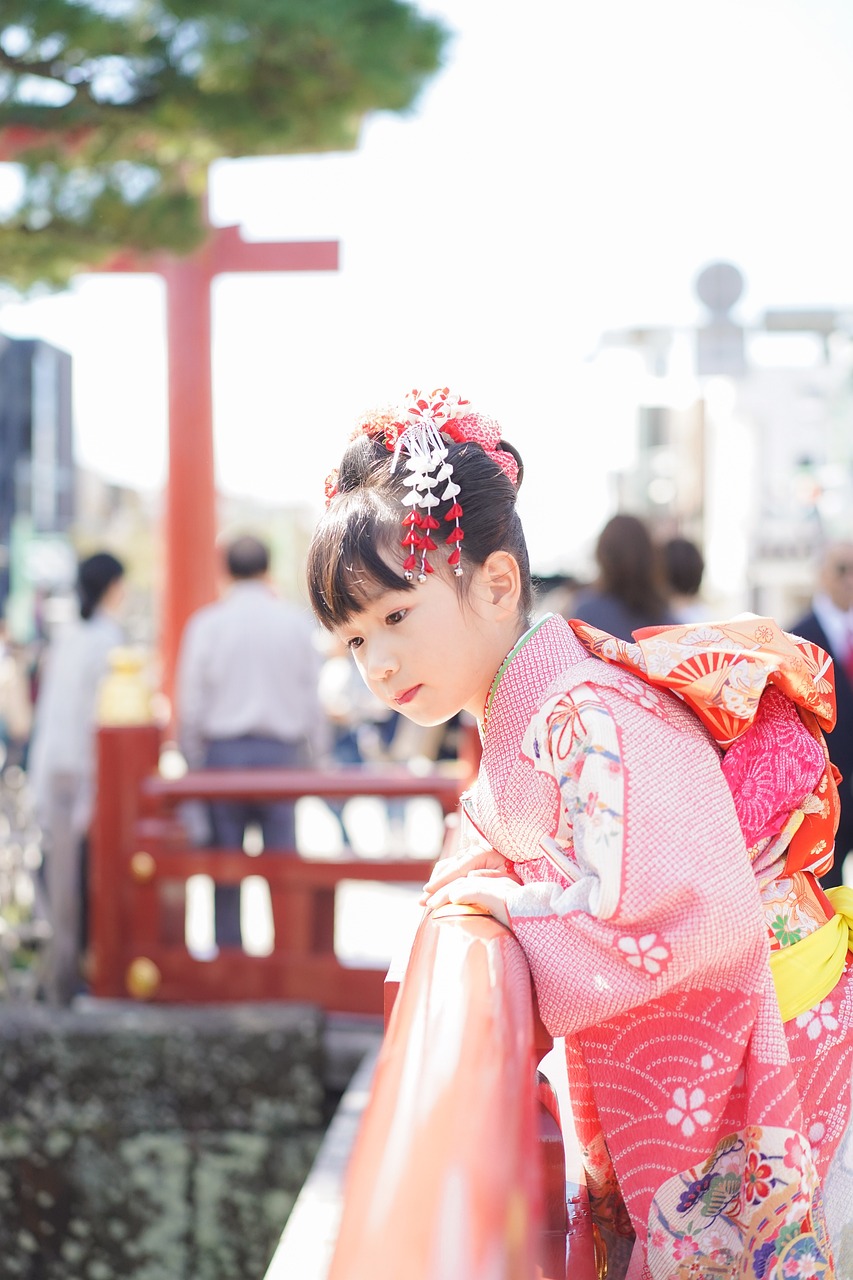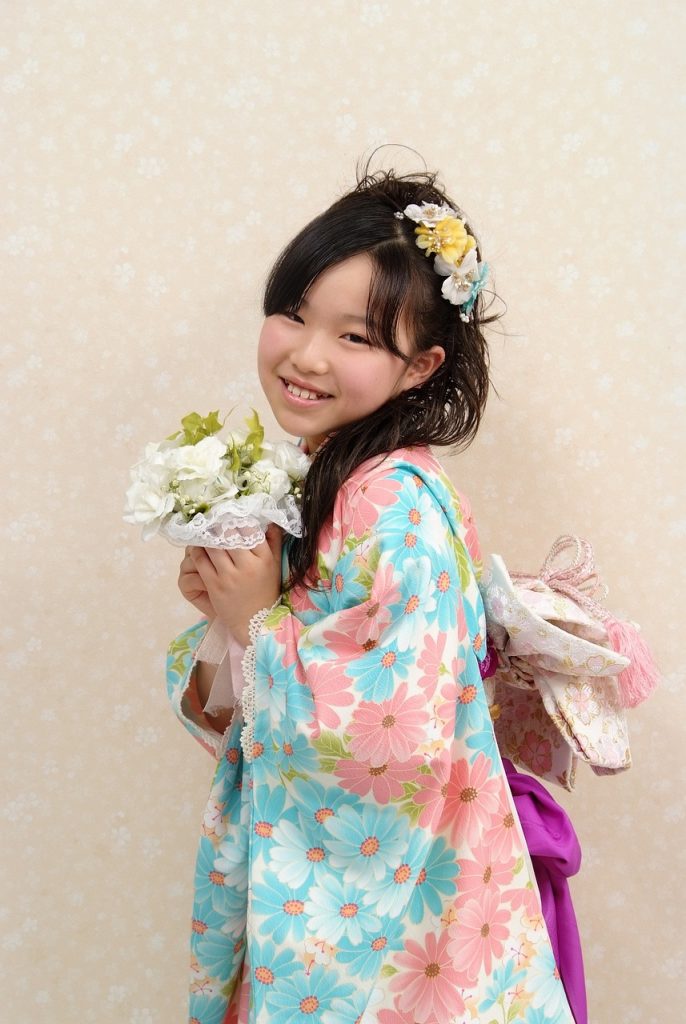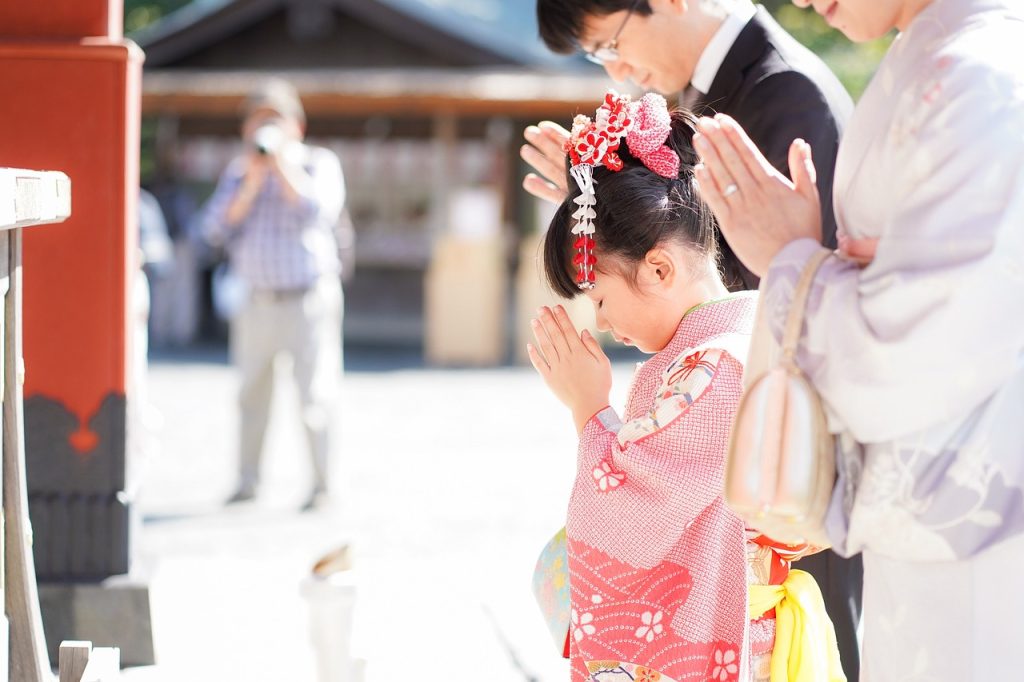
What is Shichi-Go-San ?
Shichi-Go-San (七五三, “Seven-Five-Three”) is a traditional Japanese festival celebrated on November 15 each year, honoring the growth and well-being of young children. The name, “Shichi-Go-San,” comes from the ages of the children involved: seven (七, shichi), five (五, go), and three (三, san).
Who celebrates Shichi-Go-San ?
Boys typically celebrate at age five. Girls participate at ages three and seven. These ages were chosen for their association with lucky numbers and because they mark significant stages in a child’s development in traditional Japanese culture.
Shichi-Go-San continues to be widely celebrated in Japan, even as modern family life changes. Some families may celebrate on a weekend near November 15 to accommodate school and work schedules, but the heart of the festival remains a meaningful, family-centered tradition

Origin and Significance of Shichi-Go-San
The origins of 七五三 (Shichi-Go-San) date back to the Heian period (794–1185) in Japan. It began as a custom among the nobility to celebrate significant milestones in a child’s early development. Over time, the practice spread to the samurai class during the Edo period (1603–1868) and eventually became a widely observed tradition among the general population.
The chosen ages of three, five, and seven are rooted in numerology and traditional beliefs. Odd numbers were considered auspicious in East Asian cultures based on the principles of yin and yang. These ages also marked important stages in a child’s development in ancient Japan :
Three (三歳): This age marked the end of the practice of shaving a child’s head, symbolizing the beginning of growing their hair
Five (五歳): Boys were first allowed to wear hakama, formal trousers, symbolizing their progression into boyhood
Seven (七歳): Girls began wearing a proper obi (wide sash) with their kimono, signifying their transition to girlhood.
Shichi-Go-San is deeply tied to Shinto rituals and the belief in kami (spirits). It reflects a desire to thank the spirits for the child’s growth and to seek protection from illness or misfortune during vulnerable early years. Shichi-Go-San is both a cultural and familial celebration, marking a major milestone in a child’s early life and acknowledging their growth. It also serves to pass down Japanese customs and values to younger generations, linking them with their heritage.

Traditions during Shichi-Go-San
Dressing in Traditional Attire:
Children dress in formal, traditional Japanese clothing. Boys often wear haori (a short kimono jacket) and hakama (wide-leg pants), while girls may wear special kimono.
Shrine Visits:
Families take their children to Shinto shrines to pray for their children’s health, happiness, and safe growth. It’s a day for parents and relatives to express gratitude for the child’s development so far.

Photos and Celebrations:
Many families take commemorative photos on this day. These photos often capture the children in traditional attire in natural or temple settings. Families may also have special meals or gatherings after visiting the shrine.

Eating Chitose Ame (千歳飴)
Chitose Ame or “thousand-year candy” is a long, thin, red-and-white candy wrapped in a bag decorated with symbols of good fortune, like cranes and turtles, which are symbols of longevity and happiness. The candy symbolizes wishes for a long, prosperous life for the children.
